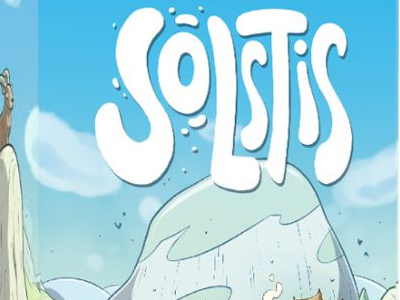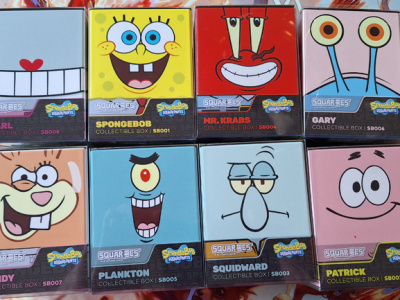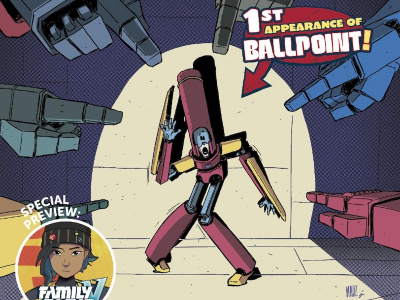For the rest of our interviews with Asmodee execs:
ICv2 Interview: Asmodee Execs on the State of the Market, Part 2
ICv2 Interview: Asmodee Execs on New Distribution Policies
ICv2 Interview: Asmodee Execs on the ANA Consolidation, Part 1
ICv2 Interview: Asmodee Execs on the ANA Consolidation, Part 2
ICv2 Interview: Asmodee Execs on Diversity in Hobby Games
ICv2 Interview: Asmodee Execs on Counterfeiting
What's the current state of the U.S. hobby games market in your view?
Christian Petersen: It's the best time to be alive if you are gamer, in terms of the variety of content, the different avenues to actually get the content. It's a great time for the quality of games.
In terms of the industry, we're reaching a little bit of the end of a chapter. We're seeing so much publishing of a garden variety, of different types of titles, particularly coming in from the Kickstarter area, that there are simply so many titles being offered to the market. That is wonderful for choice, but it does mean that since the market is not growing at the same rate as the number of titles being published, we're starting to see a lot more competition for the shelf space in the shops.
I started doing this about 20 years ago, and most of the shops that I would go into would usually have a lot of space available. I didn't think they'd ever fill up, because I didn't think that the market would either have the capital or the product assortment to ever really fill up those spaces. Now we're actually seeing a very, very significant amount of publishing. A lot of it is coming relatively un-curated, because it's coming from the Kickstarter space. We think our retailers today are just subject to an enormous amount of solicitation in the gaming space, and they’re actually running out of space!
Have you counted that number of releases?
Petersen: I have not personally counted them, no. But I have read and heard some retailers say that there were close to, at times, up to 80 new releases a week. It's obviously not small. These aren't like comic books that just take up a tiny bit of space and you can put in the penny bin later. Board games are a much more significant investment for the retailer in treasure and space.
That would include individual miniatures and that kind of stuff too?
Petersen: My understanding was 80 board games. That's a number that I can't verify, but I do know, talking to the people that I've talked to extensively over the last year, we encountered this as one of the issues in the marketplace. Distributors no longer really had any time to talk about new product, talk about how those products could grow and make those stores more successful, and how they could gain new audiences.
It was all about, "I have this. How many do you want?" Cycle in, cycle out. The long tail-end game started really dramatically changing. They would come in, stock out, and then because that shelf space needed to be replaced so fast, it has affected the tail end of some games that should have been classics and evergreens. This must be affecting more than just the board game category.
Are you seeing that effect on your line?
Petersen: Certainly a part of it, yeah. Fortunately, we've had some other lines that are doing exceptionally well and are getting restocked, but it certainly has affected some titles on even our part, but also on others' part that could have been evergreen titles that now simply do not have enough doors opening up on the retail side to probably justify keeping it in print, just based on minimum print run quantity requirements.
Steve Horvath: The state of the market in general has seen a zenith that I don't think it's ever seen before in its history with the proliferation of products coming out, and some truly unbelievably cool products across the board in multiple different categories.
It's been a fantastic experience for people. It also, on the other hand, has been a flood so much that I'm not sure how well people can absorb it anymore. Stores have filled up. The number of board games alone that many retailers are saying on Facebook they have in their stores is staggering to me.
The concern is, with reportedly some 3,500 plus new titles coming out last year, how anybody can absorb that. It's more than people can process. Games that were successful a few years ago just aren't successful anymore, because they're just getting lost in the noise. Nobody can differentiate.
Not only are new games missing out on that, but the back catalog of staples is being lost in the shuffle in many cases as well, which is also a big concern for many publishers. We're very, very lucky that we have such a stellar list of games, but I think even some of those have suffered.
What I've heard from too many retailers for this to not be a fact is that what you will see happen at times is a game sells, and it gets filled in by a different game, and the reorder on that just gets lost in the shuffle. That's a big concern.
I've also heard from many sources in the industry that the tail of games has been affected to where it's become kind of a boom and bust mentality. A game comes out. If it doesn't hit in the first two weeks, it's done, and you move on. Where in years past, games had a little bit more time to find their feet, and take root with an audience.
It's a great time for publishers, retailers, and consumers, but it's also somewhat of a dangerous time, too.
If a game had come out five years ago or ten years ago, had an opportunity to become a long tail game and become a perennial, and now it's getting shoved off the shelf by something newer that might not have that same potential to be a long-term game, what's the solution?
Petersen: In our mind, the solution is more dialogue with the retail base, to give them an understanding which games are going to have long term support from the publisher, which games we really believe in. We have to find ways to market and support the games with other expansion product or any other way that we can to make sure that they know that we are investing in that game over the long term.
How to keep those evergreens on the shelf? First of all, you just have to make a better game. Then you have to try to educate retailers and get support over the long run.
One thing that both retailers and Asmodee can do is to try and keep the game in stock (that is for the games that really have the chance to be evergreens). The problem we were seeing in the marketplace is the actual communication, the actual contact between distributor and retailer to help them really grow their business, is lacking. We need to do a better job helping retailers grow their business. Hobby games retailers are important to us not only in that they're an important conduit of sales, but because they’re the really, really important in getting new gamers created.
One of the wonderful things about the gaming space is the stickiness of the hobby. I’ve had the good fortune of being a gamer my whole life. I've never seen anybody or met anybody who has been a gamer that later decided they were not going to be a gamer.
Most people that get that bug and eat that first game up are going to be interested in gaming for the rest of their life. They may leave, typically towards the middle of their life, when they get kids, they’re starting a job and the real world interferes with their gaming and latenight D&D sessions. But then, after a while, you see a lot of gamers come back. Once the kids get a little older, maybe there's a little more money in the house, once everything is a little more settled in life, they come back. We see a lot of gamers right in that pre-25-year-old state and then that post 40-year-old state. Fortunately, we’re also seeing a growing number of people that keep up with the gaming lifestyle even in the busiest periods of their lives.
We want to generate gamers and the stores help us do that.
There’s a lot happening in terms of changes in the channels through which hobby games are sold; mass merchants are more active, online is growing fast. You talked about growth of the business--is that happening at the same pace in all these channels? What's your reflection on the change in the business because of the expansion of channels?
Petersen: It's complicated. I don't think I have a crystal ball to completely understand necessarily all the aspects of what's going on vis-a-vis a channel like Kickstarter, something that we've toyed with using, but have never committed to because we believe that it's the hobby, brick-and-mortar shops that really are generating that core interest and generating that core traffic that we need.
I once talked to some guys over at Wizards of the Coast. Whether that number is true now I don't know, but they were saying that they lose about 20 to 25 percent of their player base every year. They have to generate that many players just to stay even and not even grow the game.
For Magic: The Gathering specifically?
Petersen: For Magic specifically, yeah. Of course, overall, that's true for a lot of game lines. People rotate out. Many people get to be gamers through college, or some other transient part of their life, then they drift out, often to another game.
To grow your business for your stakeholders, to improve the games you make, to improve product quality, etc., a publisher must grow its revenue. So you're constantly looking to generate new audiences, more gamers, for your product. Certainly the Internet has done a phenomenal job of supplying and informing and creating communities surrounding gamers. It doesn't do as good a job of generating new gamers. To do that, you really have to get into playing with people across a table, to feel like you're part of a community.
So for us, hobby game stores take on a much more important function these days as community centers. The local galaxy of gamers that form around your local hobby games store, or maybe the network of hobby game stores in your local area, become part of the culture of your gaming hobby. The good hobby game stores know this, they are our best ambassadors to the public.
A lot of these stores also are utilizing the online space. The online space is very important and it certainly is a category that's grown tremendously. That's phenomenal; it's great for players to be able to harness that.
The trick is, as a publisher, our job is to make a game and get it in the hands of the player. That's our reason to exist, because we want players to play our games. To do that, in effect, we have to have some intermediaries that will help us get our product to that player. Those intermediaries offer us services. They take risks. They do work. We compensate them for that work and the product risk they take, and we do that, effectively, by issuing wholesale discounts.
If you have one channel that's doing a certain amount of work, and another channel investing a lot more work and risk in promoting our products and brands, it is our view that Asmodee should compensate that channel more, because they're investing more. They're spending more money on marketing and advertising our product. That's a very fair, reasonable thing.
The online channel, while it can be very effective, generally competes on price and availability. That is not necessarily the case in the retail space. Physical stores can provide demo space. They can provide tournament space. They can provide knowledgeable, face-to-face information and interaction about a product. And it's a product that's available right now. It is an instant availability that you don't have online, and that physical space is an investment for the retailer.
The online space is getting better and better as a retail experience; I hear about same day deliveries perhaps becoming the norm. That's a future bridge to cross. But right now, if you really need that game for tonight, because you've got family coming over, you should be able to drive down to your game store and pick it up. If you want to get together with your friends and play a few new games outside the house, or want to participate in a tournament or special game event, you should have a local game store to drive down to and do these things. Certainly, we’d like you to, and we want to pay for gamers to have that service. To that effect, we chose to extend better wholesale discounts to local game stores.
Click here to go to Part 2.









